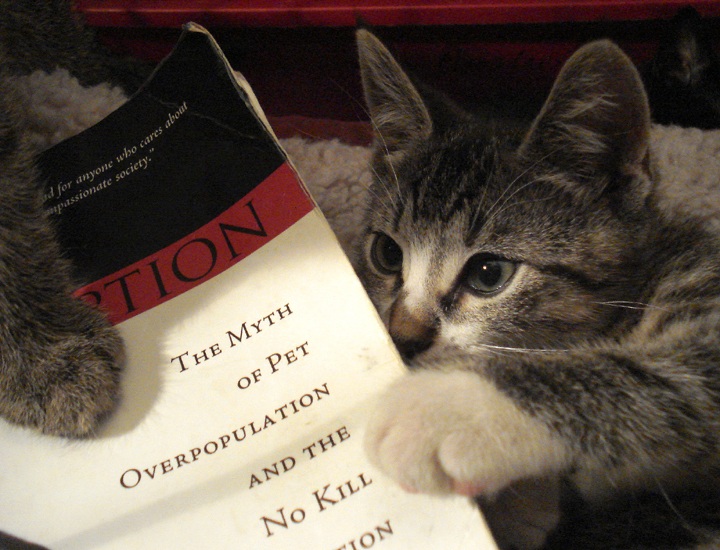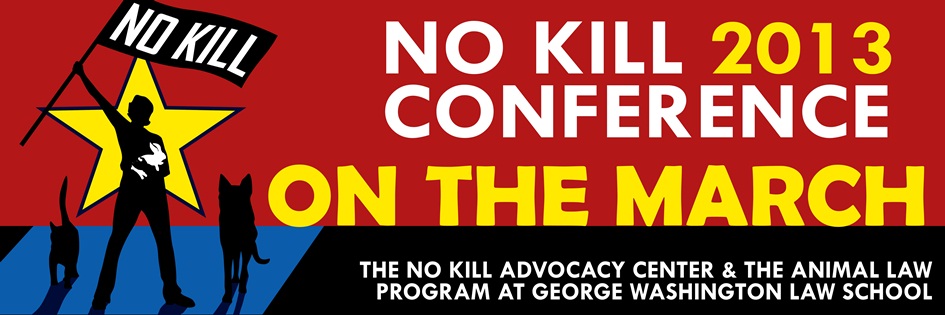
A Model of Innovative, Compassionate Animal Sheltering
No Kill is an innovative, cost-effective model of animal sheltering that allows open admission animal control shelters to save all healthy and treatable animals. Unlike the “adopt some and kill the rest” form of animal sheltering that has dominated in the United States for the past 100 years and is responsible for the needless deaths of millions of healthy and treatable animals every year, No Kill shelters are saving as high as 99% of all animals entrusted to their care: http://bit.ly/SOVIEV.
How It Works
No Kill shelters implement a series of programs and services collectively known as “The No Kill Equation.” The No Kill Equation decreases a shelter’s impounds and increases a shelter’s reclaims while vastly expanding adoptions. The programs of the No Kill Equation include augmenting paid staff with community volunteers, foster care for sick, injured, unweaned or traumatized animals, neuter and release for feral cats, medical and behavior rehabilitation, partnerships with rescue groups, pet retention and effective public relations among others. When implemented comprehensively and with integrity, these programs are transformative: http://bit.ly/VT4zay.
Achieving No Kill is not complicated, but it does require replacing the traditional model of animal sheltering which is passive, complacent and plagued by convenience killing, with a proactive, can-do attitude and work ethic that rejects killing. The programs of the No Kill Equation require dedication and effort and for this reason, are sometimes portrayed by the traditional sheltering establishment as “controversial.” They are not. They are simple procedures that Americans would be shocked to learn shelters are not already doing: http://bit.ly/SOVIEV.
When a shelter director says they are “opposed to No Kill,” it means they reject foster care in favor of killing, reject vaccinations and medical care in favor of killing, reject knocking on doors to get lost dogs home rather than killing, and reject adoptions in favor of killing. In other words, they are advocating killing in the face of readily-available, cost-effective alternatives to killing. The same is true of each and every program of the No Kill Equation, because when a shelter implements them comprehensively, they achieve No Kill: http://bit.ly/SOVIEV.
A No Kill shelter can be a public, municipal agency and there are several No Kill animal control shelters run by government to prove it: http://bit.ly/V2YDP0.
Success Across the Nation
There are now roughly 90 communities representing some 300 cities and towns of every conceivable demographic (rich/poor, conservative/liberal, large/small, Northern/Southern, urban/rural) across America that are saving in excess of 90% of all animals: http://bit.ly/V2YDP0.
They range from new communities which have recently achieved that level of success to communities which did so and have continued to do so for more than a decade; from small communities taking in a few thousand animals to large ones taking in as many as 23,000 animals a year: http://bit.ly/V2YDP0.
Communities with high rates of impounds, foreclosures, unemployment, poverty and transient populations have achieved save rates in the mid-90th percentile: http://bit.ly/WbpV31.
The vast majority of communities which have achieved success have done so in six months or less: http://bit.ly/WHYDCD.
Over one new community per week saved in excess of 90% of all animals in 2012: http://bit.ly/TitDg7.
More Cost-Effective Than Killing
No Kill is good policy that reduces costs associated with killing, enhances community support, increases user fees such as adoption revenues, and brings in additional tax revenues: http://bit.ly/T9OyAi.
Statistics Disprove the Traditional Excuse for Killing
There are roughly three million dogs and cats killed in U.S. shelters annually because they lack a home, but about 23.5 million Americans add a new dog or cat to their households every year. We do not have a “pet overpopulation” problem; we have a market share challenge. When shelters compete for the market share of homes and keep animals alive long enough to find those homes, shelter animals are saved rather than killed: http://bit.ly/T9OQHp.
Consistent with Public Safety
Since the No Kill philosophy does not mandate that truly vicious dogs and irremediably ill/injured animals be adopted, it is consistent with public health and safety: http://bit.ly/Whvy43.
Good Public Policy Popular with Voters
Seven out of 10 American believe that it should be illegal to kill animals in shelters unless those animals are suffering or are dangerous. As such, No Kill is a bipartisan issue with broad public support: http://bit.ly/Vpeqa5.
Our Nation’s Homeless Animals Deserve Better
Regardless of whether or not a shelter director believes No Kill is possible, he/she is obligated to try. Even if a shelter director fails to implement the No Kill Equation to the point that it replaces killing entirely, they will certainly save more animals than they would without it, and that is worth doing: http://bit.ly/WbpV31.
In short, No Kill is a humane, sustainable, cost-effective model that works hand in hand with public safety while reflecting the compassionate, animal-loving values of the American people: http://bit.ly/T9OyAi.
Learn more by clicking here.
—————-

In 2012, over one new community per week achieved a save rate of at least 90% and as high as 99%. The No Kill revolution is ON THE MARCH. Join me as we celebrate that achievement and teach you how to do the same: nokillconference.org